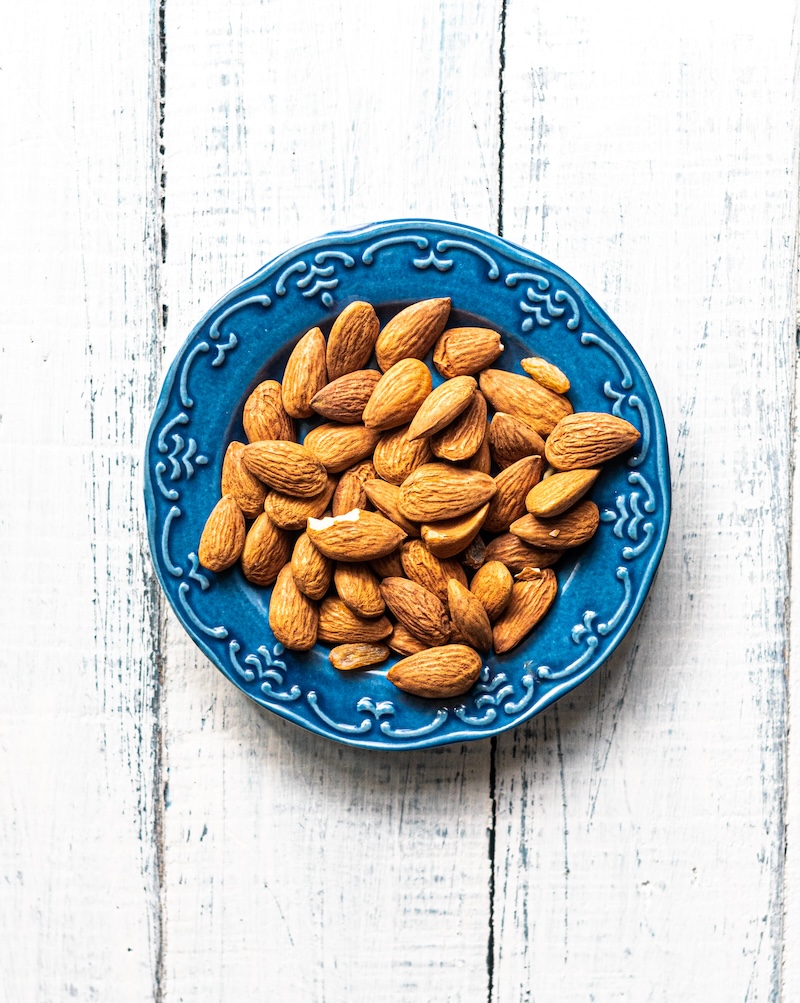Food allergies are pretty common, and they can include usual offenders like gluten, dairy, and eggs, and it’s necessary for people with these allergies to make efforts to steer clear of these foods to protect their health and wellness.
But nuts, especially peanuts, are some of the most prevalent food allergies, and nut allergy symptoms can be pretty serious. So, learning how to live with nut allergies is not only important, but it’s also imperative. In fact, learning how to live with nut allergies can actually save your life.
Why Are Nut Allergies Increasingly More Common?
Your grandparents, and even your parents, probably don’t suffer from a nut allergy. But kids today are developing this allergy at record speed.
According to a survey conducted by the Center for Disease Control (CDC), since 1990, there has been a 50% increase in nut allergies for children. That comes to about 1 in every 13 American children.
Therefore, even if your family is affected by nut allergies, chances are you know someone who has to deal with this allergy. But where do nut allergies come from? And why are so many more children developing this (sometimes deadly) reaction to nuts?
Are People Allergic to the Nut or the Pesticides?
One argument is that the agricultural industry is to blame for the rise in nut allergies (and especially peanut allergies).
Let’s consider the peanut, for example.
It is actually a member of the legume family, and it grows under the soil. And if the soil is contaminated with a chemical called glyphosate, it can lead to serious health problems like infertility and cancer.
It’s not that farmers are using glyphosate on the peanut crops. But what is happening is that they use this chemical on cotton crops, and they rotate their crops between cotton and peanut. Therefore, peanuts are absorbing the glyphosate in the soil, too.
Along with glyphosate, peanut crops are contaminated with other pesticides, insecticides, and fungicides.
Are Peanuts Toxic?
Since peanuts are grown in warm climates and are underground, a fungus can develop, and it can release a poison called aflatoxin, which is deadly and linked to cancer, particularly cancer of the liver.
As you can see, peanuts are one particular nut that is exposed to lots of harmful chemicals, which can help to explain the growing epidemic of peanut allergies.
If you’ve wondered why are people allergic to peanuts, then this, combined with the 13 proteins found in peanuts, which can trigger allergic reactions, it’s easy to see how peanuts can be such a dangerous food.
Tree Nut Allergies
Tree nuts differ from peanuts. First of all, peanuts are not actually a nut but a legume. Secondly, peanuts are grown from trees.
People with a peanut allergy can also experience an allergic reaction to at least one type of tree nut. Here’s a list of tree nuts most commonly consumed:
- Almonds
- Cashews
- Walnuts
- Hazelnuts
- Macadamia nuts
- Pistachios
- Chestnuts
- Brazil nuts
- Pine nuts
- Lichee nuts
What’s inside these nuts to cause an allergic reaction? Certain proteins within the nuts can cause mild to severe symptoms, which we’ll cover in greater detail below.
People with a tree nut allergy aren’t usually just allergic to one type of nut. So, it’s a good idea to avoid all tree nuts and their products.
Similarly, if someone has an allergic reaction to peanuts, it’s very likely that they will also have an allergy to tree nuts.
Finally, an individual can have an allergy to both walnuts and pecans but not have an allergy to cashews or pistachios since these two nut pairs don’t have similar allergenic proteins. Thus, tree nut allergy can be quite complicated and does not always showcase the same symptoms for every nut.
Nut Allergy Symptoms
When someone has a nut allergy, it’s because their immune system is overreacting to the proteins present in these nuts. Essentially, that’s what causes a nut allergy.
So, if you have a walnut, for example, your body looks at the walnut proteins like they’re dangerous invaders, and your immunity starts to defend your body. And this is when you start to experience nut allergy symptoms.
Every individual is different, and therefore, their reaction and symptoms of nut allergy may vary both in the type of symptom as well as the severity of it.
Most Common Nut Allergy Symptoms:
- Asthma
- Shortness of breath
- Wheezing
- Rashes, such as red spots on the skin
- Tingling or itchy mouth and throat
- Hoarseness
- Difficulty swallowing
- Swollen, watery and /or itchy eyes
- Abdominal pain
- Diarrhea
- Nausea
- Hives
- Lowered blood pressure
- Dizziness/fainting
- Anaphylaxis
As you can see, some nut allergy symptoms are milder than others, and the most serious of all – anaphylaxis – can even be life-threatening. Therefore, while some nut allergies can be fatal, not all are. Nonetheless, it’s crucial to take precautions to avoid risking your health, wellness, and even your life.
What Products Contain Peanuts or Tree Nuts?
If someone has a nut allergy, the simplest solution would be to avoid that food, right?
Well, unfortunately, it’s not that simple. Even if you avoid nuts themselves, you can still ingest nuts without being aware of it. That’s because they’re a common and sometimes hidden ingredient in many foods.
To help you steer clear of nut exposure and contamination, always be very wary of these foods/food groups:
- Baked goods, including cookies – Cross-contamination is a big risk factory in bakeries, so it’s a good idea to avoid store-bought cookies and muffins and just make your own instead. Or, seek out nut-free baked goods.
- Candies and chocolate – Unfortunately, nuts can be a hidden ingredient for small manufacturers. So, it’s a good idea to check with the manufacturer directly. Or, to opt for bigger manufacturers who offer more transparent labeling and ingredient lists.
- Ice cream – Contamination is less likely if you buy a carton of nut-free ice cream, but if you go out for your ice cream, it’s possible that spoons, scoops, and other pieces of equipment can contaminate your ice cream.
- Ethnic cuisines, including Chinese, African, Indian, Thai, and Vietnamese – Eating out is always risky when you have a food allergy, and if you have a nut allergy, it’s very important that you approach Asian and African cuisines with a lot of caution. Peanuts are a common ingredient in these dishes, and sometimes it is not disclosed, setting you up for an unexpected and potentially dangerous reaction.
- Sauces, dips, and marinades – Because peanuts and peanut butter are so cheap and widely available, it’s an easy way to thicken sauces and dips. So, that’s something to be aware of, too.
- Flavored coffee, frozen desserts, or even cold cuts – nuts can be found in a variety of food products, including even products you wouldn’t normally suspect.
How to Eat Out When You Have Nut Allergies
Depending on the severity of your symptoms, you might need to be extra cautious about eating out. And for some, it’s just easier to eat at high-quality restaurants where you can discuss your condition with the server and maybe even the cook.
Since nut allergies are a growing concern, restaurants are now offering more and more nut-free dishes. But always remember that it’s important that you notify your server of your allergy even if your order states that it’s “nut-free”.
How to Live on a Nut-Free Diet
If it’s too risky or you don’t feel safe eating out due to your nut allergy, don’t worry. There are many great cookbooks available to help you create restaurant-worthy dishes that you and your family will absolutely love.
And what you’ll love even more is the peace of mind these meals bring.
- Livia’s Kitchen: Naturally Sweet and Indulgent Treats makes it easy for you to enjoy baked goods that are nut-free, and even gluten-, dairy- and refined sugar-free, too.
- Paleo Cooking from Elana’s Pantry: Gluten-Free, Grain-Free, Dairy-Free Recipes is another great choice if you’re looking for safe food to enjoy. Just ask author Elana, who shares that “more than two-thirds of the recipes in [this book] are nut-free!”
How to Educate Your Family and Friends About Your Nut Allergies
When you have a nut allergy, you know what foods are safe to eat and what foods you must enjoy. You also know how difficult your symptoms can be and how life is with a nut allergy.
If your family and friends don’t have similar experiences with nut allergies, they may not understand your situation, and they may even underestimate or dismiss your food allergy. To help you navigate family gatherings where food and conversation are involved, try to do the following tips:
- Bring your own nut-free dish that everyone can enjoy. This way, you don’t feel isolated and like the odd one out because of your nut allergy. What’s more, it gives your family and friends an opportunity to enjoy the same foods you do.
- Set peaceful boundaries: Some people ask about food allergy symptoms out of idle curiosity or real concern, but if you’re not comfortable discussing these things, don’t feel pressured to do so. You can simply tell them that you’d rather not discuss your body’s reactions and move on to another topic.
- Don’t be shy: Nut allergies can be very serious, so don’t be afraid to let people know that your nut allergy isn’t just a nuisance but a health condition you respect. If they’re not familiar with nut allergies and why they can be serious, consider sharing an informative website, article, or even podcast about it to give them a heads-up so you’re all on the same page.
Dealing with a nut allergy can be really difficult, but with knowledge, preparation, and awareness, you can learn how to live with nut allergies and also help others support your journey in health and wellness.








